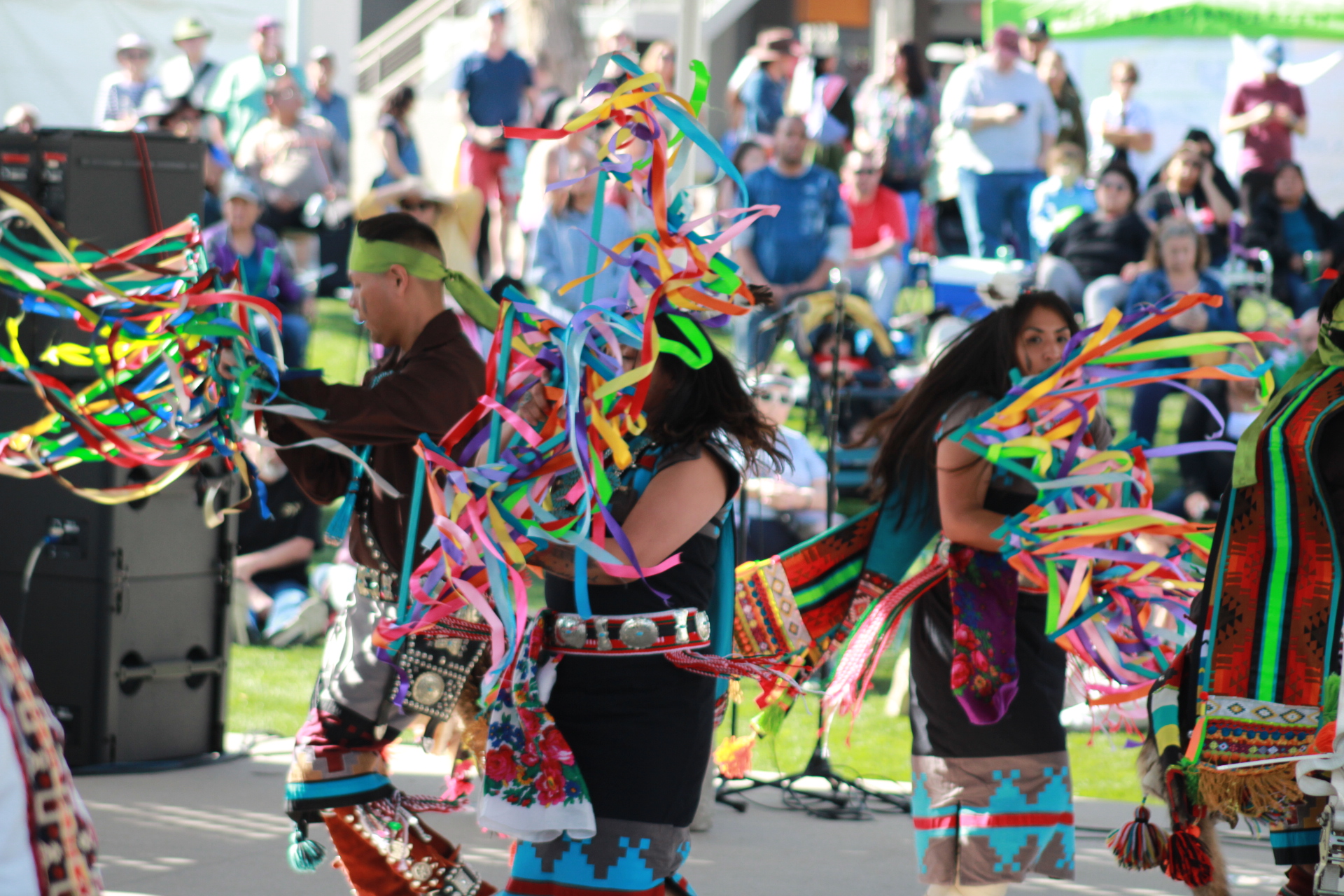
- Details
- By Darren Thompson
SCOTTSDALE, ARIZ. — This weekend, the Arizona Indian Festival showcased the culture and heritage of the state’s 22 federally recognized tribes to a crowd of more than 10,000.
While the festival has had various venues throughout the years, it has been a popular staple of Scottsdale Western Week since 2012 and is a popular event among the area’s indigenous communities. It is the largest Native gathering in Arizona.
“Over the years we have had several Indian festivals, today we’re here at Scottsdale Civic Center showcasing all 22 tribes to showcase our culture and promote tourism in each of our reservations,” Arizona American Indian Tourism Association President Rory Majenty told Native News Online. “There’s a lot of beautiful things at the festival, and we welcome all visitors to learn about the beautiful culture that we have as Native people.”
During the two-day cultural event, visitors were shown traditional songs and dances from the Burnette Apache Crown Dancers, Dineh’tah Navajo Dancers, Pascua Yaqui Dancers; Black Mountain Bird Singers, Apache Riders from White Mountain Apache, Big Sandy Bird Dancers; Zuni Traditional Dancers, Dinetah Pollen Dancers, Yavapai Apache Little Warriorettes. Crowds were also treated to language presentations from tribal royalty. The artist market featured 69 American Indian arts and crafts vendors.
Also unique to the festival is the presentation of “The Little Sister Rug”—a rare Chilchinbeto Rug created by 11 Navajo weavers from the Navajo Nation’s Chilchinbeto Chapter. The rug measures 20 feet in height and 25 feet in width.
The weekend celebration is always free and open to the public.
“We’re all in this together, and there’s many lessons we can learn from each other,” Scottsdale Mayor David Ortega told the crowd at the Arizona Indian Festival on Sunday, Feb. 5.
More Stories Like This
What Inspires Indigenous Ballet Dancer Jock SotoGrand Rapids Public Museum Hosts Indigenous Culture Celebrations
In Case You Missed It: Native Bidaské - Julian Brave NoiseCat on His New Book “We Survived the Night”
Santa Ynez Band of Chumash Indians to Host 19th Annual Culture Day on October 18
Cherokee Nation Collaborates with DreamWorks and NBCUniversal to Bring Cherokee-Language Dub of How to Train Your Dragon
Help us tell the stories that could save Native languages and food traditions
At a critical moment for Indian Country, Native News Online is embarking on our most ambitious reporting project yet: "Cultivating Culture," a three-year investigation into two forces shaping Native community survival—food sovereignty and language revitalization.
The devastating impact of COVID-19 accelerated the loss of Native elders and with them, irreplaceable cultural knowledge. Yet across tribal communities, innovative leaders are fighting back, reclaiming traditional food systems and breathing new life into Native languages. These aren't just cultural preservation efforts—they're powerful pathways to community health, healing, and resilience.
Our dedicated reporting team will spend three years documenting these stories through on-the-ground reporting in 18 tribal communities, producing over 200 in-depth stories, 18 podcast episodes, and multimedia content that amplifies Indigenous voices. We'll show policymakers, funders, and allies how cultural restoration directly impacts physical and mental wellness while celebrating successful models of sovereignty and self-determination.
This isn't corporate media parachuting into Indian Country for a quick story. This is sustained, relationship-based journalism by Native reporters who understand these communities. It's "Warrior Journalism"—fearless reporting that serves the 5.5 million readers who depend on us for news that mainstream media often ignores.
We need your help right now. While we've secured partial funding, we're still $450,000 short of our three-year budget. Our immediate goal is $25,000 this month to keep this critical work moving forward—funding reporter salaries, travel to remote communities, photography, and the deep reporting these stories deserve.
Every dollar directly supports Indigenous journalists telling Indigenous stories. Whether it's $5 or $50, your contribution ensures these vital narratives of resilience, innovation, and hope don't disappear into silence.
 The stakes couldn't be higher. Native languages are being lost at an alarming rate. Food insecurity plagues many tribal communities. But solutions are emerging, and these stories need to be told.
The stakes couldn't be higher. Native languages are being lost at an alarming rate. Food insecurity plagues many tribal communities. But solutions are emerging, and these stories need to be told.
Support independent Native journalism. Fund the stories that matter.
Levi Rickert (Potawatomi), Editor & Publisher
